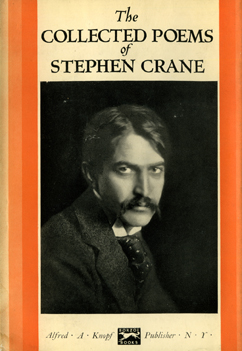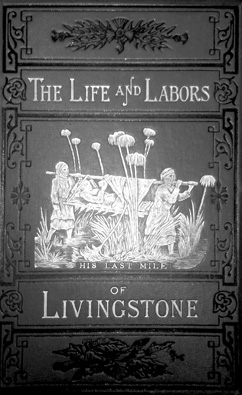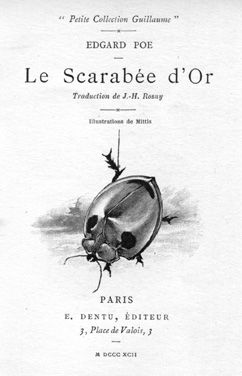
|
|
Subscribe to our newsletter |
|
Vol. LXV, No. 42
|
Wednesday, October 19, 2011
|

|
|
Subscribe to our newsletter |
|
Vol. LXV, No. 42
|
Wednesday, October 19, 2011
|
  
The Thrill of the Unexpected: Unpacking Treasures for the Library Book SaleStuart MitchnerIn an instant, a treasure of incalculable value lay gleaming before us. — Edgar Allan Poe, from Lo, there was the ball of gold. — Stephen Crane, from The treasures that turn up during the preparation of the Princeton Public Library Book Sale, which starts this Friday, come in all shapes, styles, and sizes. One example is this year’s big find, a first edition/first state of Roald Dahl’s classic Charlie and the Chocolate Factory. Then there’s the unexpected charge you get after opening a box to find The Life and Labors of Livingstone, with its embossed cover image of Livingstone being carried on a litter through the jungle (“His Last Mile”). To hold a solid, elegantly embellished volume from 1875 in your hand provides a thrill (a sort of time-travel buzz) that you rarely if ever experience with new books at Barnes and Noble or Labyrinth, no matter how lavishly illustrated or brilliantly designed. Sometimes the charge of the unexpected is simply a matter of dimensions. For instance, two of this year’s largest and smallest books are by two of the world’s most beloved and collectible authors. Weighing in at maybe 10 pounds is a massive one-volume edition of the Works of Jane Austen in a blue binding with silver tinted lettering. For whatever reason, you don’t expect mass and volume from the author of Pride and Prejudice. You’re looking for country cottage or a Bath town house, not a castle. The author of one of the smallest treasures we unearthed this year is Edgar Allan Poe, who has probably generated more odd, quirky, examples of book art than anyone this side of Shakespeare and the Old Testament. The volume the book sale has is so small, you could hide it in the palm of your hand. It’s a French edition from 1892 of Le Scarabée d’or, better known as The Gold Bug. Nabokov would be grinning in his grave if he could see the author’s name as it appears on the title page under the words “Petite Collection Guillame.” Edgard Poe! I rarely resort to exclamation points but I figure “Edgard Poe” is worth one. Besides giving Poe a kind of Nordic heft, “Edgard” sounds like a dark and stormy night. “Everyone loves Poe,” says co-chair Sherri Garber, referring to those book sale customers who snap up even lowly odd volumes from battered sets with yellowed pages. I spent a column (February 25, 2009) trying to document the mystery of Poe’s appeal on the occasion of his bicentennial (“Poe at 200: “Where the World, the Flesh, and the Devil Leave Off”). What makes a treasure of our palm-sized Le Scarabée d’or, published in Paris by E. Dentu, Editeur, 3 Place de Valois 3, in addition to its unique dimensions, is the French connection. True, this is a translation by one J.-H. Rosny, not Baudelaire, but Poe and the author of Les Fleurs du Mal are soulmates for the ages. You can’t see Poe’s words in French without thinking of the impact of his work on Baudelaire and then on French readers by way of Baudelaire’s inspired presentations and translations. Finally, what makes this petite Poe special is the design, which nicely complements the small scale. The type is neat, tight, and tidy, and the illustrations by Mittis are a perfect fit in every way, at once delicate and intense, from the scarab on the title page through to the image of a pirate’s skull and crossbones that follows the concluding paragraph. This treasure about secret messages in code and buried treasures was found buried inside a mountain of donations. Poe’s peculiar attraction for people who love and collect books can be explained in part by the fact that original editions of his tales are among the rarest and priciest on the market. As I pointed out in my bicentennial celebration, anyone who chances on a first printing of the poems or tales would be able to move to the Riviera and set up a Swiss bank account. Featuring something by Poe for a Princeton book sale makes sense since the Poe brothers loom large in Princeton University legend (thus Poe Field and Poe Road). The author’s cousin, John Prentiss Poe, class of 1864, had six sons, all heroes in lacrosse, football, or war, including Edgar Allan Poe, class of 1891, an All-American who played the leading role in Princeton’s 41 to 5 crushing of Harvard; during the game when a Princeton man was asked if the star player was related to “the great Edgar Allan Poe,” the reply was, “He is the great Edgar Allan Poe!” Stephen Crane Behind the Plate The World Series between the St. Louis Cardinals and the Texas Rangers begins today. What does baseball have to do with books and book sales? The answer in two words is Stephen Crane, who has donated, as it were, several different editions of The Red Badge of Courage and a volume of his Collected Poems to this year’s stock. Meanwhile, a living donor has given the Friends a signed copy of Princeton University faculty member Edmund White’s semi-biographical/fictional work, Hotel de Dream: A New York Novel. Born in Newark on November 1, 1871, Stephen Crane is probably the only major American writer who could have had a career in the big leagues. As catcher and later short stop for the Syracuse Orangemen, he hit .272 and played the game, it was said, “with fiendish glee.” He later wrote, “I did little work in school, but confined my abilities, such as they were, to the diamond.” In a letter to Leslie’s Weekly, he claimed that “they used to say at Syracuse University … that I was cut out to be a professional baseball player.” According to a story by Rick Burton in the March 13, 2010, New York Times, Crane also coached and played quarterback on a football team in northern New Jersey while finishing The Red Badge of Courage (“I believe I got my sense of the rage of conflict on the football field”). Baseball was his first love, however, and he kept in practice during his days as a journalist in Asbury Park by tossing a baseball back and forth with his fellow novelist Hamlin Garland while discussing theories of pitching, such as the way a curve ball defies the laws of physics by altering its course in mid-air. Ball of Gold Speaking of treasures, some of the most artfully designed books in the late 1890s were works by Crane, including his first book of poems, The Black Riders (1895), the cover of which features an Art Nouveau orchid by his friend from the Art Students League Frederic Gordon. His second and last collection of verse, War is Kind (1899), was elaborately illustrated, also in the Art Nouveau style, by Will Bradley. Although neither one of those rare volumes is to be found at the Friends Book Sale, The Collected Poems of Stephen Crane will be there with its brooding cover photo of the author. Open this particular treasure chest and you find poem number XXXV from The Black Riders: A man saw a ball of gold in the sky; He climbed for it, And eventually he achieved it — It was clay. Now this is the strange part: When the man went to the earth And looked again, Lo, there was the ball of gold. Now this is the strange part: It was a ball of gold. Aye, by the heavens, it was a ball of gold. There’s a poem that should cheer the heart of book lovers as they scan the tables at this week’s sale, looking for the great golden find of their heart’s desire. |